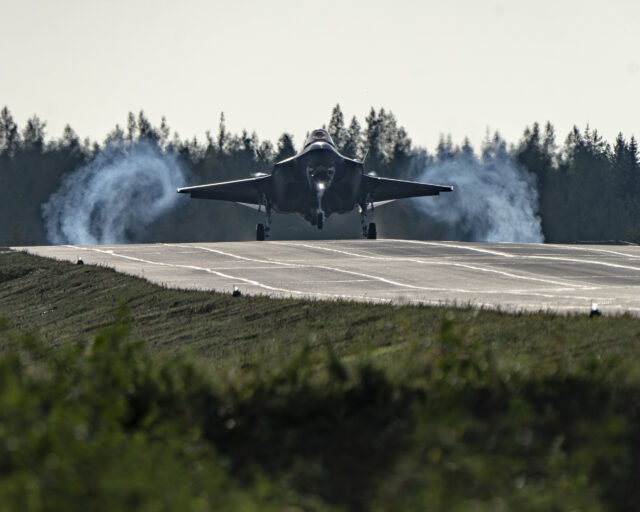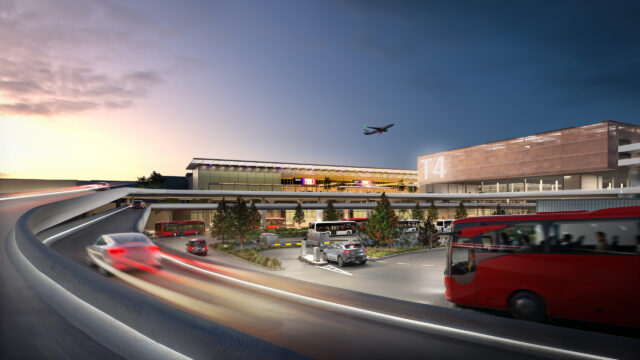Bahrain Airport Company outlines “aggressive programme” for continued growth
November 27, 2024

“I think by the end of this year, we will be close to reaching the pre-COVID passenger traffic,” mused Albinfalah, speaking to Aerospace Global News at the recent Bahrain International Airshow. Indeed, statistics so far this year are indicative of the exponential growth at the heart of the airport’s ambitions: a 13.2% rise in passenger volume in H1 2024 (reaching 4.6 million) and a 9.4% rise in air traffic movements, with over 48,000 flights recorded.
Despite acknowledging the knock-on impact airlines’ own issues (including delivery delays and engine availability) have had on the airport’s ambitions, Albinfalah remains optimistic: citing “an aggressive programme to target new airlines and develop new destinations for the Kingdom of Bahrain”. Inkeeping with the airport’s key role within the national tourism strategy, “our strategy and annual plans will be very much dedicated to explore new airlines, new destinations, both legacy and low cost as well,” he elaborated.
Looking to the future
At the heart of this momentum is the restructuring of the airport’s operations to fall under the Gulf Air Holding Group in 2010, formed to consolidate Mumtalakat’s aviation holdings (including oversight of key portfolios including national carrier Gulf Air, Bahrain Airport Company and Gulf Aviation Academy). “There is a huge potential for synergies to be harvested within a group,” explained Albinfalah; citing benefits to the airport’s support services, digital automation, addressing of cyber security threats, and approach to managing risk and business continuity. “I think that’s the most significant value proposition of a holding company, while we maintain all of the regulatory requirements and segregation of duties and responsibilities between the airport and the airline”.
Expanding terminal capacity
However, central to the customer experience is undoubtedly the airport’s impressive $1.1 billion terminal; a project started in 2014 “when the government of Bahrain decided it was time to transport the airport into a modern hub”: replacing its 1970s predecessor already operating at nearly twice its capacity, Just four years after breaking ground in 2016, the pandemic delayed its completion from 2020, with the new and much improved terminal subsequently opening in January 2021. “The customer experience was built into the design of the building from day one,” Albinfalah highlighted, with the new terminal “easy to navigate and not overwhelming”.
Architectural initiatives (such as maintaining one level from curbside until the gate, with passengers only descending stairs prior to boarding) also serve to streamline the pace at which they can pass through the facility. This “fundamental objective” to speed up passenger processing will also prove instrumental in allowing the airport to accommodate more than the 14 million annual capacity the building was, in a traditional sense, designed to accommodate. With capacity currently standing at around 9.7 million, next year should see Bahrain International Airport surpass 10 million – a significant increase in capacity than even the management behind the newly expanded 1980s terminal were unlikely to have predicted.
Additional facilities
“Cargo is another strategic part of our development of the airport,” continued Albinfalah, describing an increase in cargo tonnage passing through the airport of around 9% year-on-year. Phase one of the site’s ‘express cargo village’ development has already sold out, with the airport in the process of launching the tender for the second phase; set to be around three times the size and complementing an “ambitious national strategy that was launched a few years back”.
Additionally, ongoing plans are afoot for a “very aggressive programme to rehabilitate huge parts of the airfield, including the main runway and the emergency runway” (currently a taxiway), including upgrading the runway from ICAO Category 2 to Category 3 (offering lower minimums for visibility and decision height). An additional taxiway will be built parallel to the existing one, with “significant parts of the aprons and aircraft stands” to be similarly revamped – initiatives for which the airport will be appointing a project manager within the first quarter of next year.
And with two expressions of interest from operators interested in developing business jet hangars onsite – potentially including Bahrain’s inaugural operator, Valo Aviation – “I’m hoping we will find the space to cater for all of these interests and expressions of interest to develop facilities at the airport,” Albinfalah continued. Given the evident appetite for growth, could the airport simply run out of space? “Interestingly enough, we probably will,” he laughed, although highlighted the ongoing need to strike a balance between diversifying passenger and non-passenger revenue streams.
Looking to the future
As one of the four pillars responsible for providing access to the Kingdom, “I believe we’ve achieved that,” concluded Albinfalah. “We have an efficient airport operation, both for airlines and service providers, and this should provide the necessary platform for tourism to flourish – very much a complementary contributor to the [Bahrain Economic Vision 2030] strategy, and I think we are well positioned to make sure it achieves its objective”. And with passenger numbers in their millions set to hit double-digits next year, “our teams will be kept significantly busy for the next few years!”
















